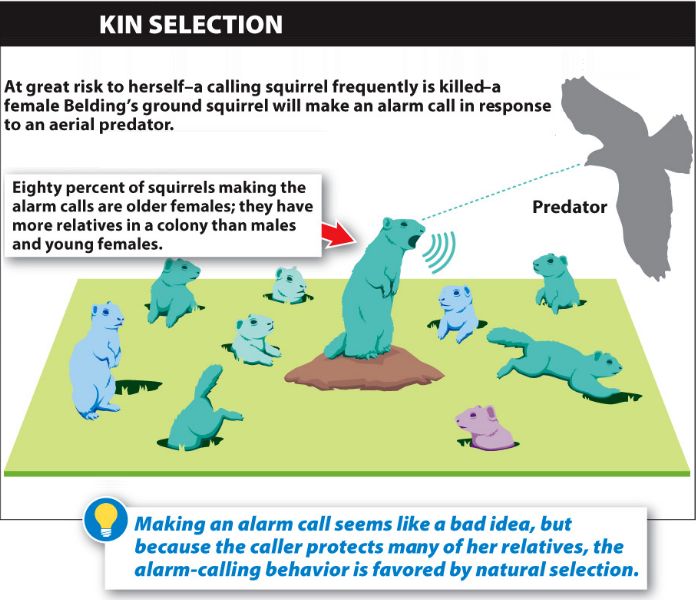 Kin selection
Kin selection
Belding's ground squirrels live underground in colonies where adult
females are closely related (kin).
A squirrel may give a loud call to alarm its nest mates when it sees a predator.
Making alarm calls is dangerous: about half the time the caller is killed by the predator,
but this may save its kin.
Close relatives share many genes,
so kin selection
may explain such altruistic behavior:
- Self-sacrifice enhances the reproductive success of some of her genes.
ground squirrel alarm call
 Evolution and behavior
Evolution and behavior 
 Evolution and behavior
Evolution and behavior 